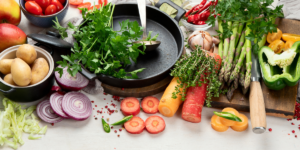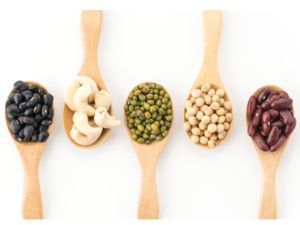Spices have been central to human history, influencing trade, exploration, and culinary traditions across the globe. Their impact is evident in the way they shaped economic fortunes, driven exploration, and transformed cultures. Here’s a comprehensive look at the history of some of the most renowned spices and the iconic dishes that feature them.
Black Pepper
History: Black pepper, often referred to as “black gold,” has a rich history that dates back thousands of years. Native to the Western Ghats of India, black pepper was so valuable that it was used as a form of currency. Its high value and demand were crucial in the development of early trade routes between India and Europe. The quest for pepper was a driving force behind the Age of Exploration, with Vasco da Gama’s voyage to India in 1498 being motivated by the search for this spice.
Dishes:
- Pepper Chicken (India): A spicy, aromatic dish that features black pepper as a central ingredient, creating a rich, flavorful experience.
- Spaghetti Carbonara (Italy): An Italian pasta dish where freshly cracked black pepper is used to enhance the creamy sauce made from eggs, cheese, and pancetta.
- Pepper Steak: A classic dish often found in various cuisines, where black pepper is used to season steaks, enhancing their flavor with a spicy heat.
Cinnamon
History: Cinnamon has been treasured since ancient times, originating from Sri Lanka and other regions in Southeast Asia. It was highly valued by ancient Egyptians, who used it in embalming and religious ceremonies. During the Middle Ages, the spice was so sought after that European powers like the Dutch and Portuguese fought for control over cinnamon-producing regions. The Dutch eventually established a monopoly over Ceylon (now Sri Lanka), leading to conflicts with other European powers.
Dishes:
- Cinnamon Rice (India): A fragrant and mildly sweet rice dish flavored with cinnamon, showcasing its subtle sweetness.
- Massaman Curry (Thailand): A rich and complex curry that incorporates cinnamon, adding a warm and aromatic flavor to the dish.
- Cinnamon Rolls: A beloved sweet pastry that uses cinnamon as its key spice, known for its warm, comforting aroma.
Nutmeg
History: Nutmeg is native to the Banda Islands in Indonesia and was highly prized during the 16th and 17th centuries. The spice’s extreme value led to significant historical events, including the Dutch massacres of the Banda Islands’ inhabitants to secure a monopoly over nutmeg production. Nutmeg was once worth more than gold, and its trade played a crucial role in the development of global trade networks.
Dishes:
- Eggnog (Global): A creamy holiday beverage that uses nutmeg to add a warm and festive spice.
- Nutmeg Rice Pudding (India): A traditional dessert flavored with nutmeg, known for its creamy texture and aromatic spice.
- Spiced Pumpkin Pie (Global): Uses nutmeg as a key ingredient in its spice blend, giving the pie its distinctive flavor.
Saffron
History: Saffron is the most expensive spice in the world, with a history that spans over 3,000 years. It was used by ancient Greeks and Romans not only for culinary purposes but also for its medicinal and perfumery qualities. Saffron’s cultivation and trade were highly valued, and it was often associated with luxury and opulence. Its high cost is due to the labor-intensive process of harvesting the delicate threads from crocus flowers.
Dishes:
- Saffron Rice (India): A vibrant and aromatic rice dish that uses saffron to impart a golden color and rich flavor.
- Saffron Chicken: A dish that highlights saffron’s unique taste, often used in various global cuisines to add depth and elegance.
- Paella (Spain): A famous Spanish dish where saffron is used to give the rice its distinctive color and flavor.
Turmeric
History: Turmeric has been used in India for thousands of years, both as a spice and in traditional medicine. Its vibrant yellow color has made it a popular dye in addition to its culinary uses. In Ayurvedic medicine, turmeric is valued for its anti-inflammatory and antioxidant properties. Its global popularity has increased recently due to its perceived health benefits and its role in various cuisines worldwide.
Dishes:
- Turmeric Chicken (India): A flavorful curry where turmeric is used to give the chicken its bright yellow color and earthy taste.
- Golden Milk (India): A traditional beverage made with turmeric, known for its potential health benefits and warming properties.
- Turmeric Rice (Global): A simple yet aromatic rice dish flavored with turmeric, commonly found in various cuisines.
Cloves
History: Cloves, native to the Maluku Islands (also known as the Spice Islands) in Indonesia, were highly prized during the Middle Ages. Their value led to significant historical events, including the establishment of European trading posts and the eventual colonization of the Spice Islands. Cloves were used for their medicinal properties and as a spice to enhance food flavors, and they played a major role in global spice trade.
Dishes:
- Clove Rice (India): A dish where cloves are used to impart a fragrant and spicy flavor to the rice.
- Massaman Curry (Thailand): A rich and flavorful curry that often includes cloves among its spices, contributing to its complex and aromatic taste.
- Gingerbread Cookies: These classic holiday treats are spiced with cloves, giving them a rich, warm, and aromatic flavor that is perfect for festive occasions.
The rich histories of these spices illustrate their significant impact on global trade and cultural exchanges. From shaping exploration and trade routes to influencing culinary traditions, spices continue to be cherished for their distinctive flavors and historical significance.





